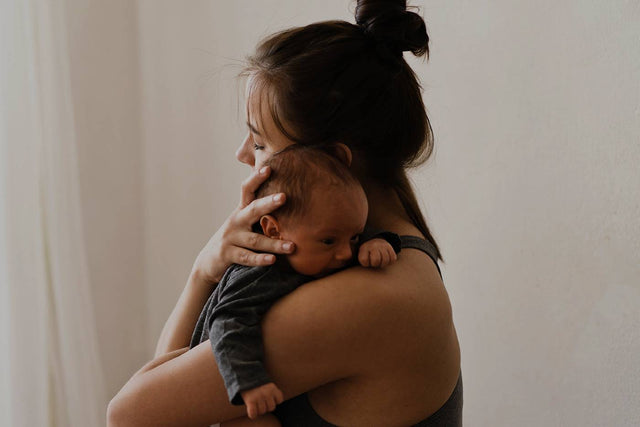Risky Sleep Practices Surge After Night-Waking, According to New Research

It’s well known that placing your baby to sleep on their back is the most effective thing you can do to lower their risk of sudden unexplained infant death (SUID). So, it’s a relief to learn that parents have been inching closer and closer to making back-sleeping their default safe-sleep practice. A brand-new report in the journal Pediatrics finds that 67% of parents surveyed are, in fact, placing their infants on their backs for night-night, a great improvement from just 44% of parents doing the same in 2017. Of course, 100% is the goal! (After all, the SUID rates in America plummeted by more than 50% once a national campaign began that heavily encouraged safe back-sleeping for babies)
The not-so-good news: The new report also found that 39% of parents said they changed their baby’s safe sleep practice after a wake-up, such as not returning their baby to the crib. And 13% of parents who initially placed their infants on their backs at bedtime did not do so after a night-waking. This is an extremely dangerous practice: According to the National Institute of Health, Babies who normally sleep on their backs, but are occasionally placed on their bellies for sleep, are at very high risk for SUID.
Why Safe Sleep Practices Change with Night-Waking
While researchers did not delve into why parents change their safe-sleep practices in the middle of the night, we do know that exhaustion can cloud a parent’s ability to make sound decisions. In fact, research has shown that sleep-deprived folks’ attention spans dropped to levels found when legally drunk. And we also know that 72% of parents who feed their little ones in bed fall sound asleep with their babies post-feed. And 44% fall asleep while night-feeding on a sofa or recliner. And if you’re breastfeeding, your body releases the hormone oxytocin in your brain, which can cause a relaxed and sleepy feeling, making it even harder to stay awake and return Baby to their bassinet in the proper position.
How to Practice Safe-Sleep All Night Long
To set yourself up for all-night safe-sleep success with Baby, try the following:
-
Keep Baby in a nearby bassinet. When your little one’s safe sleep space is close by, it’s much easier to transfer them back to bed. The American Academy of Pediatrics recommends room-sharing for at least the first 6 months of Baby’s life.
-
Swaddle your baby. Snugly wrapping your baby in a swaddle blanket can help little ones fall and stay asleep on their backs. Some babies have trouble sleeping on their backs because they startle themselves awake with their flailing little arms. But when swaddled, babies are far less likely to do that.
-
Get out of bed. When your baby wakes to eat or cuddle, resist the urge to bring them into your bed. While you may fully intend to place your baby back in their crib or bassinet once calm, it’s not only too tempting to remain cozy in bed—it’s actually hard not to fall asleep. If you find yourself nodding off while soothing or feeding, move from place to place, feed somewhere you’re unlikely to doze, drink some water, and/or have a healthy midnight snack to stay awake.
-
Try SNOO. With its womb-like rocking, all-night white noise, and safe hug of a swaddle, SNOO is designed to activate Baby’s natural calming reflex, aka their “off switch” for crying and “on switch” for sleep, which reduces night-wakings and promotes more sleep overall. Plus, SNOO has a special swaddle that clips into the bed to keep babies securely swaddled on their backs all night (and nap) long.